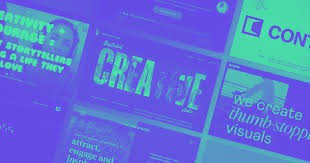The Role of Typography in Website Design

Typography plays a crucial role in the design and user experience of a website. The choice of fonts and typography design can have a significant impact on readability, user perception, and the overall aesthetic of a site. This document will examine how these two elements work together to create a visually appealing and user-friendly website.
Readability
One of the primary objectives of typography in website design is to enhance readability. The font choice, font size, and font style all contribute to how easy it is for visitors to read the text. Choosing fonts that are clear and legible, such as sans-serif fonts, can help enhance the readability of a website. Additionally, using larger font sizes for smaller text, such as headings and subheadings, can help differentiate the content and improve the overall readability.
User Perception
Typography also plays a role in shaping user perception. The way the text is presented visually can evoke emotions and create certain impressions. For example, a serif font, such as Times New Roman, may evoke a more traditional and professional feeling, while a sans-serif font, such as Arial, may come across as more modern and minimalist. The choice of fonts can reflect a brand’s identity and help to set the tone for the site.
Overall Aesthetic
The choice of typography also significantly impacts the overall aesthetic of a site. Different fonts can convey different moods and color palettes. For example, a bold, uppercase font can create a bold and commanding aesthetic, while a script font can add a graceful and elegant touch. Additionally, the choice of typography can complement or contrast with the color palette and overall design of the website.
Considerations for Typography in Website Design
When selecting fonts for a website, there are several factors to consider:
1. Font Family: It is important to select a suitable font family that aligns with the brand’s identity and target audience.
2. Font Size: Ensure that the font size is legible and appropriate for the content.
3. Font Weight: Choose a font weight that balances readability with the overall aesthetic of the website.
4. Font Style: Consider using a mix of font styles, such as italic, bold, and underline, for emphasis and differentiation.
5. Font Colors: Choose font colors that contrast well with the background color to ensure readability.
6. Responsive Design: Ensure that typography adapts to different screen sizes, allowing readability on all devices.
7. Brand Consistency: Maintain brand consistency by using typography that aligns with the brand’s existing style guide.
In conclusion, typography plays a significant role in website design. The choice of fonts and typography design can influence readability, user perception, and the overall aesthetic of the site. By considering factors such as readability, user perception, and overall aesthetic, designers can create websites that are visually appealing and user-friendly.
About The Author:
Paul is the founder of Forest Web Design, a leading web designer agency in Berkshire. Specialising in custom, user-centric website designs, Forest are dedicated to helping businesses establish a strong online presence. For expert guidance and innovative web solutions that drive results, visit their website or follow them on our social media channels.

